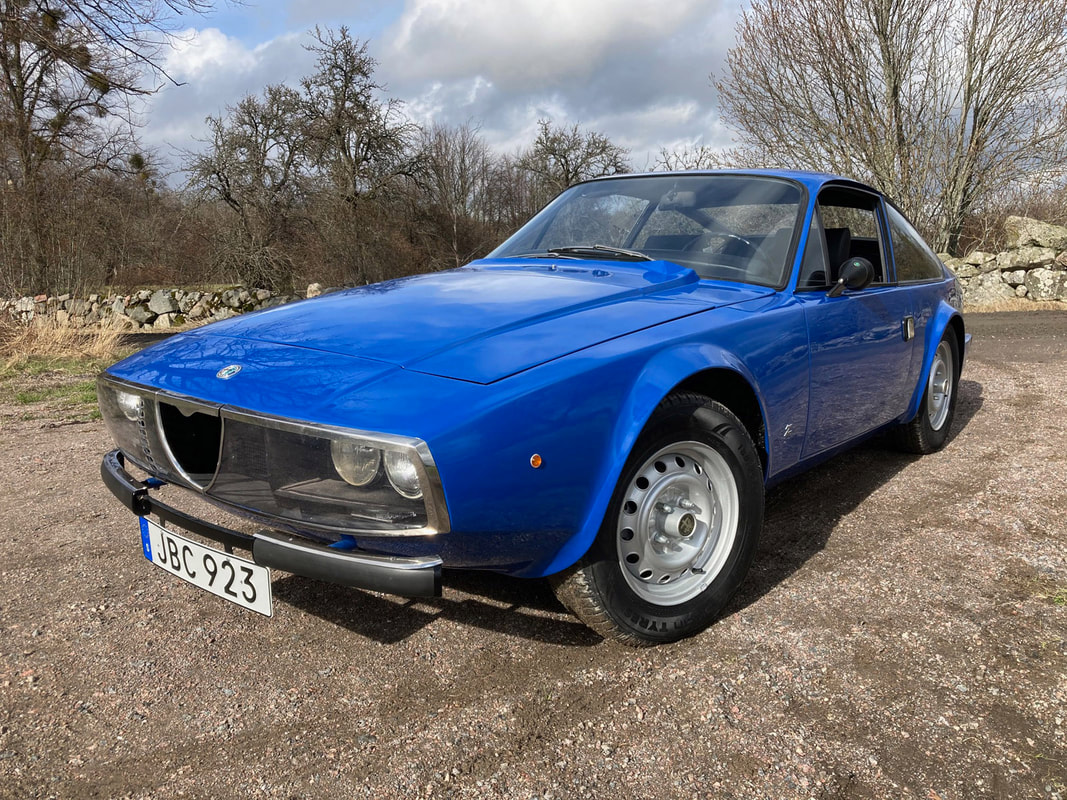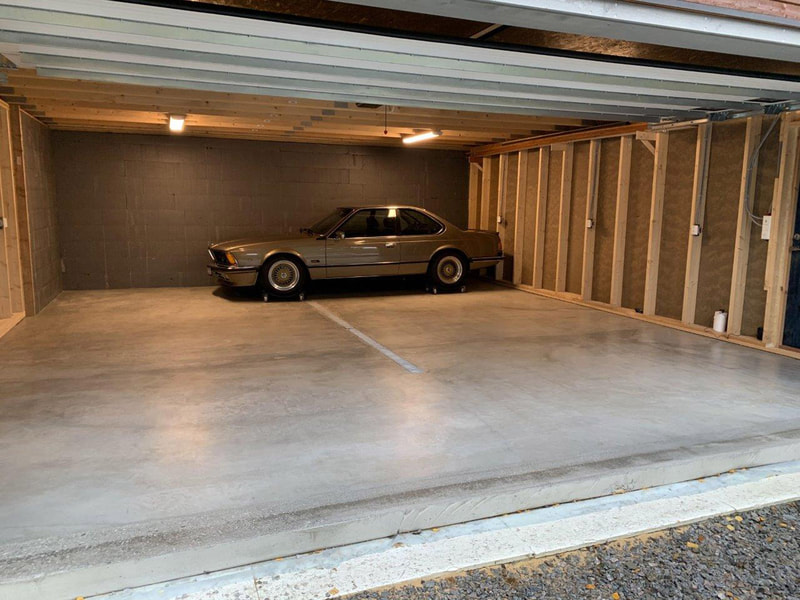LUKKET SIDE KUN TIL INVITERT KUNDE
FAKTA
Totalrestaurert i 2019-2020.
Litt fakta på engelsk:
Zagato was most famous for its two-door, aerodynamically efficient, lightweight designs, but in case of the mass produced models they had to sacrifice some of that lightness and purity on the altar of practicality and everyday durability. In the case of the Junior Zagato, this means that only the bonnet and the doors are made of alloy, while the rest is steel. Still sleeker and lighter than most despite not being a fully alloy-bodied Zagato creation, this version managed to achieve an additional 5-10mph of top speed compared to the standard GT Junior.
But the Zagato’s real benefits can’t be expressed by numbers that don’t mean very much in reality—if you’re topping out an older Alfa Romeo on the motorway, I think you might have the wrong idea. More importantly than a bit of extra speed, the Junior Zagato also had a lower center of gravity and shorter overhangs, which made it even more of fun, compact driver’s car than the majority of the other 105/115-series Alfa Romeos. Perhaps there is no need for better validation of this than the car’s owners. One of them happens to be Gordon Murray, one of the most respected racing and road car designers of all time, who’s particularly famous for focusing on the joy and purity of driving (Murray’s had his restored and upgraded, naturally, by Alfaholics). Alfaholics does more than a thorough job on its rebuilt Alfa Romeos, but the assembly of the Junior Zagatos in period was quite complex itself in the 1970s. It was very expensive, involved a lot of moving parts, and was not what you might call efficient. The body was made on the aforementioned Spider floorpan at the Maggiora works in Turin, then the body shells were transported to Alfa Romeo’s Arese plant for scoring and priming before they arrived at Zagato for painting and outfitting. The cycle ended back at the Arese facility, where the engine, transmission, and suspension components were mated to the chassis. Despite the fact that the Junior Zagatos used parts from almost two dozen mainstream production Alfas, they were still among the top three most expensive models of the Alfa Romeo range, right behind the Montreal and the Junior GTA.
With only 1117 examples produced in three years (though it should be noted that the number of finished cars is said to be slightly lower) the Junior Zagato wasn’t as successful as Alfa Romeo and Zagato hoped. The divisive shape, lackluster promotion, compromised rear seat space, and of course the high price couldn’t cope with the cheaper, but overall more desirable Bertone-designed 105/115-series coupés. Despite this, in 1972 the Junior Zagato traded its 1300 designation for 1600 when it received the more powerful 1570cc engine.
To the untrained eye the 1300 and 1600 may look identical, but the 1600 is not only 10cm longer, it there are many little details that separate the two. For example, it has a one-piece front bumper, a bulge in the rear bumper to make space for the spare wheel, more pronounced wheel arches, different headlights, and a less truncated Kamm-style rear end. More subtle is the exhaust pointing downwards on the 1600, and the fuel fill mounted on the left-hand side of the car. A little “fun fact” is that all Alfa Romeos from the period are fueled on the left side, except the Montreal and the Junior Zagato 1300. This created a common misbelief even between Alfisti that the Junior Zagato 1300 shared a fuel tank design with the Montreal—although their tanks are very similar, they aren’t the same part.
The designer, Spada, coincidentally left Zagato right around the debut of the 1600, and commented that he didn’t like the changes made to the 1300 design. Namely, he said that the balance of the initial shape was ruined by the longer rear overhang. Whether or not the 1600 was superior to the 1300 or if it was the other way around, the 1600 Junior Zagatos didn’t make much of an additional impact in period, as very soon after its debut the 1973 Oil Crisis took the wind out of the sports car market. In total only 402 examples of the 1600 Junior Zagato were built until production ended in 1975, and only 125 of those are accounted for on the model’s main online registry.
They are interesting and somewhat paradoxically rare cars. On one hand they are relatively easy to maintain and repair thanks to the wide usage of mainstream 105/115-series parts, but on the other hand if the wrong pieces break it can be very hard to track down the Junior Zagato-specific replacements.
FAKTA
Totalrestaurert i 2019-2020.
Litt fakta på engelsk:
Zagato was most famous for its two-door, aerodynamically efficient, lightweight designs, but in case of the mass produced models they had to sacrifice some of that lightness and purity on the altar of practicality and everyday durability. In the case of the Junior Zagato, this means that only the bonnet and the doors are made of alloy, while the rest is steel. Still sleeker and lighter than most despite not being a fully alloy-bodied Zagato creation, this version managed to achieve an additional 5-10mph of top speed compared to the standard GT Junior.
But the Zagato’s real benefits can’t be expressed by numbers that don’t mean very much in reality—if you’re topping out an older Alfa Romeo on the motorway, I think you might have the wrong idea. More importantly than a bit of extra speed, the Junior Zagato also had a lower center of gravity and shorter overhangs, which made it even more of fun, compact driver’s car than the majority of the other 105/115-series Alfa Romeos. Perhaps there is no need for better validation of this than the car’s owners. One of them happens to be Gordon Murray, one of the most respected racing and road car designers of all time, who’s particularly famous for focusing on the joy and purity of driving (Murray’s had his restored and upgraded, naturally, by Alfaholics). Alfaholics does more than a thorough job on its rebuilt Alfa Romeos, but the assembly of the Junior Zagatos in period was quite complex itself in the 1970s. It was very expensive, involved a lot of moving parts, and was not what you might call efficient. The body was made on the aforementioned Spider floorpan at the Maggiora works in Turin, then the body shells were transported to Alfa Romeo’s Arese plant for scoring and priming before they arrived at Zagato for painting and outfitting. The cycle ended back at the Arese facility, where the engine, transmission, and suspension components were mated to the chassis. Despite the fact that the Junior Zagatos used parts from almost two dozen mainstream production Alfas, they were still among the top three most expensive models of the Alfa Romeo range, right behind the Montreal and the Junior GTA.
With only 1117 examples produced in three years (though it should be noted that the number of finished cars is said to be slightly lower) the Junior Zagato wasn’t as successful as Alfa Romeo and Zagato hoped. The divisive shape, lackluster promotion, compromised rear seat space, and of course the high price couldn’t cope with the cheaper, but overall more desirable Bertone-designed 105/115-series coupés. Despite this, in 1972 the Junior Zagato traded its 1300 designation for 1600 when it received the more powerful 1570cc engine.
To the untrained eye the 1300 and 1600 may look identical, but the 1600 is not only 10cm longer, it there are many little details that separate the two. For example, it has a one-piece front bumper, a bulge in the rear bumper to make space for the spare wheel, more pronounced wheel arches, different headlights, and a less truncated Kamm-style rear end. More subtle is the exhaust pointing downwards on the 1600, and the fuel fill mounted on the left-hand side of the car. A little “fun fact” is that all Alfa Romeos from the period are fueled on the left side, except the Montreal and the Junior Zagato 1300. This created a common misbelief even between Alfisti that the Junior Zagato 1300 shared a fuel tank design with the Montreal—although their tanks are very similar, they aren’t the same part.
The designer, Spada, coincidentally left Zagato right around the debut of the 1600, and commented that he didn’t like the changes made to the 1300 design. Namely, he said that the balance of the initial shape was ruined by the longer rear overhang. Whether or not the 1600 was superior to the 1300 or if it was the other way around, the 1600 Junior Zagatos didn’t make much of an additional impact in period, as very soon after its debut the 1973 Oil Crisis took the wind out of the sports car market. In total only 402 examples of the 1600 Junior Zagato were built until production ended in 1975, and only 125 of those are accounted for on the model’s main online registry.
They are interesting and somewhat paradoxically rare cars. On one hand they are relatively easy to maintain and repair thanks to the wide usage of mainstream 105/115-series parts, but on the other hand if the wrong pieces break it can be very hard to track down the Junior Zagato-specific replacements.














































